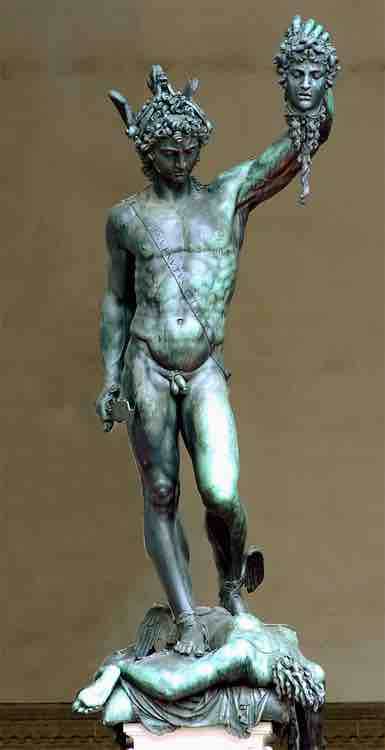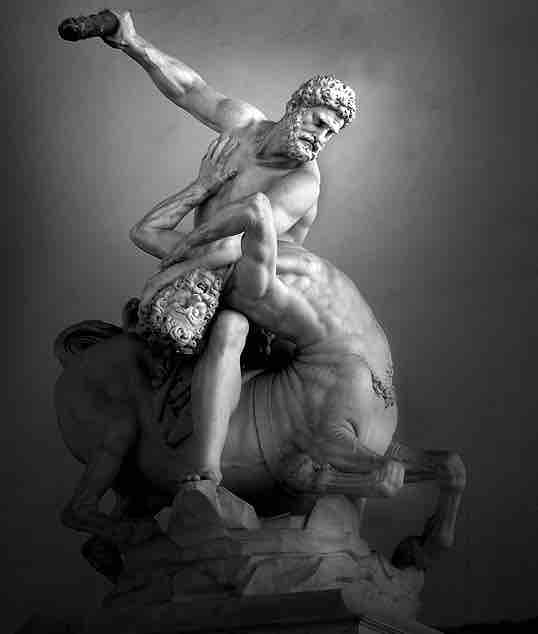While sculpture of the High Renaissance is characterized by forms with perfect proportions and restrained beauty, as best characterized by Michelangelo's David, Mannerist sculpture, like Mannerist painting, was characterized by elongated forms, spiral angels, twisted poses, and aloof subject gazes. Additionally, Mannerist sculptors worked in precious metals much more frequently than sculptors of the High Renaissance.
Figura serpentinata (Italian: serpentine figure) is a style in painting and sculpture that is typical of Mannerism. It is similar, but not identical, to contrapposto, and often features figures in spiral poses. Early examples can be seen in the work of Leonardo da Vinci, Raphael, and Michelangelo. In defining figura serpentinata, Emil Maurer writes of the painter and theorist Giovanni Paolo Lomazzo: "the recommended ideal form unites, after Lomazzo, three qualities: the pyramid, the 'serpentinata' movement and a certain numerical proportion, all three united to form one whole. At the same time, precedence is given to the 'moto', that is, to the meandering movement, which should make the pyramid, in exact proportion, into the geometrical form of a cone."
With the loosening of the norms of the High Renaissance and the development of the "Serpentinata" style, the Mannerist style's structures and rules began to be systematized. The Mannerist style of sculpture began to create a form in which figures showed physical power, passion, tension, and semantic perfection. Mannerist figural sculpture was marked by contorted, twisting poses, as best evidenced by Giambologna's Rape of the Sabine Women.

Rape of the Sabine Women, Giambologna, 1583, Florence
In this 13' 6" high marble piece, Giambologna demonstrates the use of the figura serpentinata.
As in painting, early Italian Mannerist sculpture was largely an attempt to find an original style that would expand and surpass the achievements of the High Renaissance. For contemporaries in sculpture, the High Renaissance was equated with Michelangelo, and much of the struggle to surpass his success was played out in commissions to fill other places in the Piazza della Signoria in Florence, next to Michelangelo's David.
For example, Baccio Bandinelli took over the project of Hercules and Cacus from Michelangelo, although his work was maliciously compared by Benvenuto Cellini to "a sack of melons." Like other works of Mannerists, Bandinelli removes far more of the original block of stone than Michelangelo would have done. Outside of natural stone sculptures, Cellini's bronze Perseus with the head of Medusa is a Mannerist masterpiece, designed with eight angles of view.

Perseus with the Head of Medusa, Benvenuto Celling, 1545–1554
Small bronze figures for collector's cabinets, often mythological subjects with nudes, were characteristic of Mannerist sculpture. They were a popular Renaissance form at which Giambologna excelled in the later part of the century. He and his followers devised elegant, elongated examples of the figura serpentinata, often of two intertwined figures, that were interesting from all angles and joined the Piazza della Signora collection.
